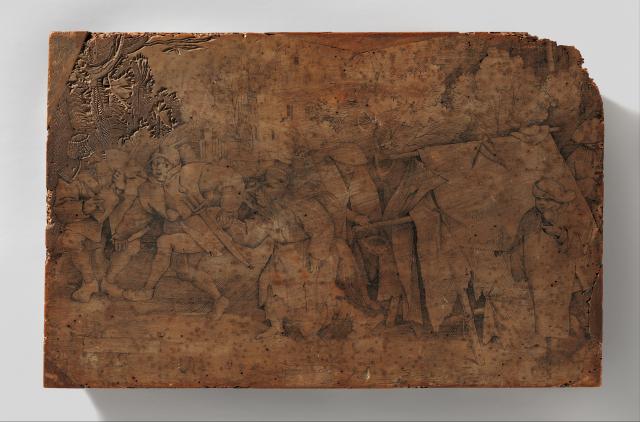This remarkable drawing represents a group of street performers putting on a comic folk play, The Dirty Bride (De Vuile Bruid) on the occasion of Shrovetide, the three days before Ash Wednesday. The coarse, bedraggled bride being led from a shabby nuptial tent is Nisa, while the prancing groom who leads her out is Mopsus. The account of their marriage derives from the Eighth Eclogue of the Roman poet Virgil, but also appeared in several contemporary books of proverbs, in which it was used to indicate a world turned upside down. In this print after Bruegel's drawing, which was engraved by Pieter van der Heyden and published by Hieronymus Cock in 1570, a Latin inscription was added below the image that translates "Mopsus marries Nisa, what may not we lovers hope for"—i.e., anything can happen. The learned members of Bruegel's and Cock's audience surely would have appreciated the association of the ancient quotation with a contemporary folk custom at Shrovetide, the season of festivity just before Lent. The drawing was originally meant to serve as the design for a woodcut but, for an unknown reason, the carving of the block was abandoned after cutting in the upper left corner was carried out. Presumably it was Bruegel's death in 1569 that brought the design into the publisher's hands and to fruition as an engraving.
The Wedding of Mopsus and Nisa (The Dirty Bride)

Production date
circa 1566
Collection
Object number
32.63
Material
Pen en zwartbruine inkt op een wit geprepareerd, deels uitgesneden houtblok
Dimensions
41.6 cm x 26.4 cm x 2.9 cm
×
